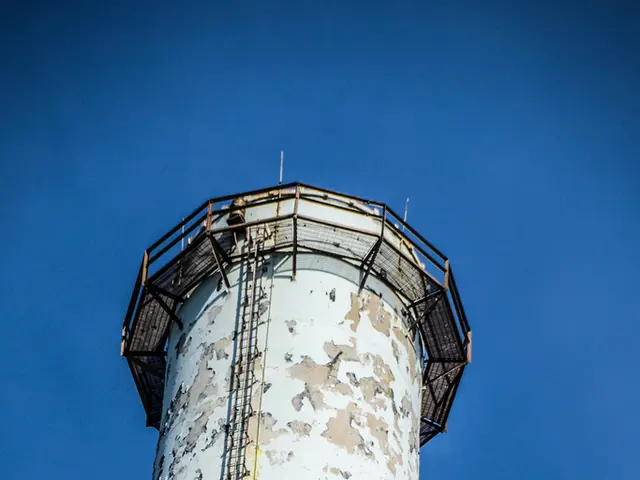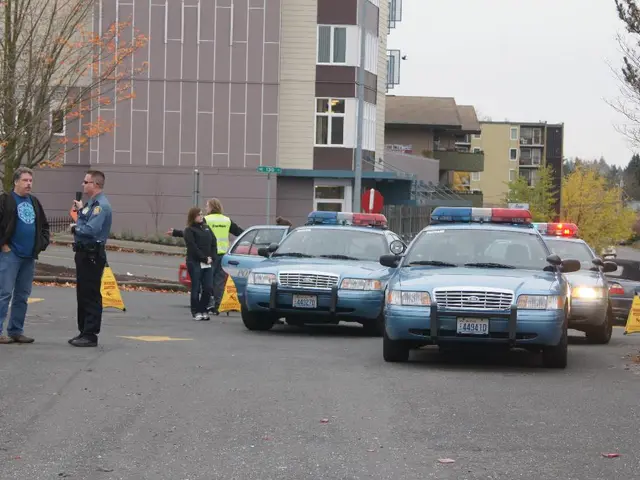B-1 Bombers Kick off New Year with Trilateral Flight
B-1 Bomber Aircraft Deploy to Guam for Initial 2025 Operation
In a bold move, four B-1 bombers touched down in Guam on Jan 15, marking the beginning of a Bomber Task Force deployment for 2025.
Not just any ordinary deployment, two of these bombers embarked on a historic trilateral flight accompanied by Japanese and South Korean fighter jets. The trio soared through the skies, showcasing a strengthening bond among these nations in response to the escalating tensions with China and North Korea.
Images shared by the 28th Bomb Wing displayed the four B-1s, hailing from Ellsworth Air Force Base, South Dakota, arriving at the western Pacific island. Bomber Task Forces are usually comprised of small units of B-1s, B-2s, or B-52s, sent overseas to bolster alliances, reassure partners, and deter adversaries like Russia and China.
With the U.S. presidential inauguration just around the corner, this deployment took flight mere days before the momentous transition.
The trilateral flight occurred on the same day, as B-1s harmonized their skies with two Japanese Air Self-Defense Force F-2s and two Republic of Korea Air Force F-15Ks somewhere between Japan and South Korea. Previously, the U.S. had engaged in bilateral bomber-fighter flights, but this trilateral partnership reflects the growing solidarity between these nations.
In a statement released at the time, Pacific Air Forces highlighted, "This first trilateral flight of 2025 builds upon a history of strong trilateral cooperation, enabling an immediate coordinated response to regional security challenges."
Following a series of milestones in 2024, this deployment comes after an unprecedented period of activity. For the first time, U.S. bombers flew out of Romania, soared over Finland for a training mission, and undertook a lengthy deployment in Sweden.
"On any given day, we're actively engaged through Bomber Task Force missions," Air Force Maj. Gen. Jason Armagost, 8th Air Force and Joint-Global Strike Operations Center commander, stated in a press release on Jan 21. "In fact, about 60 percent of the year we are deployed to a theater or providing continental U.S. (CONUS)-to-CONUS flights in support of theaters or in support of U.S. Strategic Command and the Chairman of the Joint Chiefs of Staff," he added.
These deployments not only fortify alliances with foreign partners, but they also test the crew's endurance during long-haul flights, typically lasting more than 30 hours. Lt. Col. Vanessa Wilcox, commander of the 96th Bomb Squadron, shared her thoughts after the return of a B-52 detachment from Diego Garcia, a remote island in the Indian Ocean.
"Flying for over 24 hours, pushing into the 30-hour range, is a challenge," she admitted. "It builds on our readiness, training to the capabilities we need to reach different parts of the globe, specifically across the Pacific."
This strategic maneuver is expected to have sizeable implications, forging a stronger alliance among these countries and underscoring their military cooperation, deterrence capabilities, and political alignment in the face of regional threats. However, to uncover specific details about the significance of the first trilateral Bomber Task Force flight, additional sources or official press releases would be required.
- The trilateral flight was a reflective move, showcasing the industry's aerospace technology as Japanese, South Korean, and American fighter jets partnered with B-1 bombers in response to escalating security challenges.
- The historic trilateral flight was accompanied by fighter jets from the Japanese Air Self-Defense Force and the Republic of Korea Air Force, demonstrating the aerospace sector's significant role in supporting security and finance needs.
- The trilateral Bomber Task Force deployment, consisting of B-1 bombers from the U.S. Air Force, emphasizes the importance of financial backing for the defense sector to counter potential threats, especially from nations like China and North Korea.
- In a growing era of global defense, the aerospace industry and its financing play a crucial role in the deployment of weapons systems, such as the B-1 bombers, for the purpose of preserving regional security and fostering international alliances.








